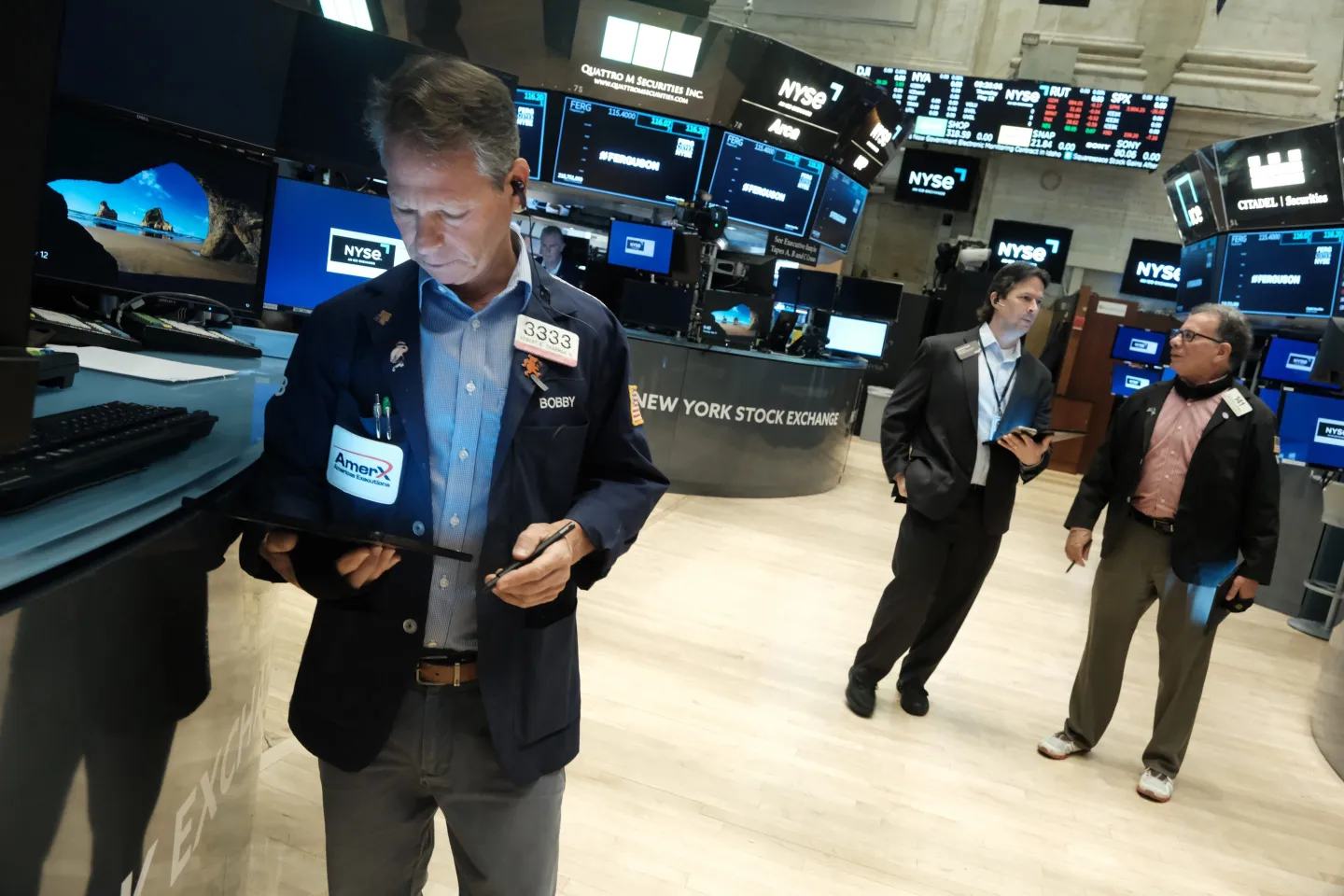
- Indices
- Stocks
Stocks rise after the Fed minutes
Do you want to know how to make money from this?
Register for free and get expert advice, access to a training course and webinars.
Key points:
- 9 out of 11 S&P 500 sectors showed growth.
- The Fed’s decision to cut the interest rate by 50 basis points and uncertainty about future regulatory actions significantly impacted market sentiment.
- Hurricane Milton and U.S.-China trade relations create additional uncertainty.
U.S. stock indices showed significant growth on Wednesday. The S&P 500 and Dow Jones Industrial Average reached new all-time highs. The positive market trend was driven by several factors.
First, investors reacted positively to the release of the Federal Reserve’s meeting minutes. Expectations regarding future monetary policy had a strong impact on market sentiment. Second, market participants are optimistically awaiting the release of inflation data for September. Additionally, the approaching earnings season also contributed to rising stock prices.
The Dow Jones Industrial Average added 431.63 points, rising by 1.03%, closing at 42,512.00 points. The S&P 500 increased by 40.91 points, or 0.71%, reaching 5,792.04 points. The Nasdaq Composite also showed positive momentum, gaining 108.70 points, or 0.60%, and closing at 18,291.62 points.
The Fed lifts traders’ optimism
The release of the minutes from the September Federal Reserve meeting clarified that most members supported the decision to lower the interest rate by 50 basis points. However, the document indicates a lack of consensus regarding future monetary policy steps. The participants concluded that this decision doesn’t determine the pace of future rate cuts.
An analysis of CME FedWatch data prior to the minutes’ release showed that investors estimated a 79% chance of a 25 basis point rate cut and a 21% chance of maintaining the rate at the current level. Thus, the released information confirmed market expectations.
Lindsey Bell, chief strategist at 248 Ventures, noted that the minutes eased investor concerns about an overly sharp rate cut. According to her, the debate over a 50 basis point cut indicates a lack of consensus on the need for urgent measures.
In the near term, investors’ attention will focus on two key events: the release of inflation data via the Consumer Price Index and the start of third-quarter corporate earnings reports. The inflation report, expected on Thursday, isn’t anticipated to bring significant surprises, as the Fed minutes already signal victory over inflation.
Market volatility this week was driven by investors adjusting their expectations about future monetary policy. The release of unexpectedly strong labor market data for September indicated the U.S. economy’s resilience, leading to revised forecasts.
Alphabet and Boeing shares end in the Red
In October, the S&P 500 reached a new all-time high, marking the 44th such occurrence in 2024. The Dow Jones also showed positive momentum, last hitting a record high on October 4.
Of the 11 sectors within the S&P 500, nine showed growth. Meanwhile, interest rate-sensitive sectors, such as utilities, saw a 0.9% decline. The communication services index, which includes Alphabet shares, also dropped by 0.6%.
Market heavyweight Alphabet‘s shares closed down by 1.5% after the U.S. Department of Justice announced it may ask a judge to force Google to sell parts of its business, including the Chrome web browser and Android operating system, to limit its search monopoly.
Daniel Morris, chief market strategist at BNP Paribas Asset Management, expressed concern about the potential negative impact of antitrust actions on the tech sector, especially its leading players.
Investors were also closely monitoring developments related to Category 5 Hurricane Milton. Approaching Florida’s west coast, the hurricane triggered tornadoes, heavy rain, and winds, threatening to unleash destructive storm surges on the region.
Among individual stocks, Boeing’s share price dropped by 3.4% due to a breakdown in negotiations between the company and its key manufacturing union. Shares of Chinese tech giants Alibaba Group and PDD Holdings also showed negative dynamics, falling by 1.6% and 2.3%, respectively. Investors are cautiously awaiting new stimulus measures from the Chinese government.
Do you want to know
How to make money from the news
Register for free and get:
- Expert consultation;
- Access to the training course;
- Opportunity to participate in webinars

